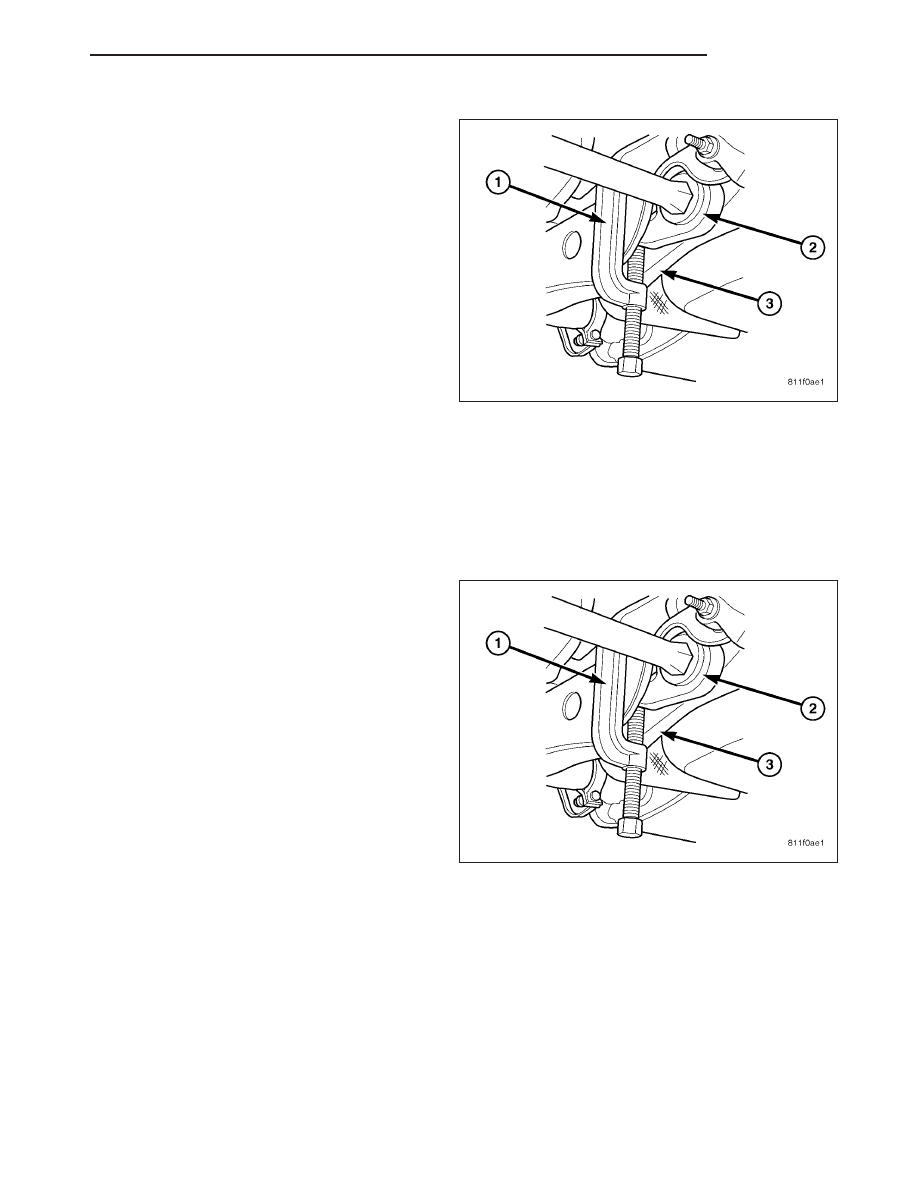Dodge Durango (HB). Manual - part 15

REMOVAL
CAUTION: The left and right side torsion bars are
NOT interchangeable. The bars are identified and
stamped R or L, for right or left. The bars do not
have a front or rear end and can be installed with
either end facing forward.
1. Raise and support the vehicle with the front sus-
pension hanging.
2. Remove the transfer case skid plate (Refer to 13 -
FRAME & BUMPERS/FRAME/TRANSFER CASE
SKID PLATE - REMOVAL).
NOTE: Count and record the number of turns for
installation reference.
3. Mark the adjustment bolt setting.
4. Install Special Tool - 8686 (1) to the anchor arm (2) and the cross member (3).
5. Increase the tension on the anchor arm tool 8686 (1) until the load is removed from the adjustment bolt and the
adjuster nut.
6. Turn the adjustment bolt counterclockwise to remove the bolt and the adjuster nut..
7. Remove the Special Tool - 8686 (1) , allowing the torsion bar to unload.
INSTALLATION
CAUTION: The left and right side torsion bars are
NOT interchangeable. The bars are identified and
stamped R or L, for right or left. The bars do not
have a front or rear end and can be installed with
either end facing forward.
1. Insert torsion bar ends into anchor and suspension
arm.
2. Position the anchor (2) in the crossmember frame
(3).
3. Install Special Tool - 8686 (1) to the anchor (2) and
the crossmember (3).
4. Increase the tension on the anchor in order to load
the torsion bar.
5. Install the adjustment bolt and the adjuster nut.
6. Turn adjustment bolt clockwise the recorded amount of turns.
7. Remove tool - 8686 (1)from the torsion bar crossmember (3).
8. Install the transfer case skid plate (Refer to 13 - FRAME & BUMPERS/FRAME/TRANSFER CASE SKID PLATE
- INSTALLATION).
9. Lower vehicle and adjust the front suspension height (Refer to 2 - SUSPENSION/WHEEL ALIGNMENT - STAN-
DARD PROCEDURE).
10. Perform a wheel alignment (Refer to 2 - SUSPENSION/WHEEL ALIGNMENT - STANDARD PROCEDURE).
HB
FRONT
2 - 27